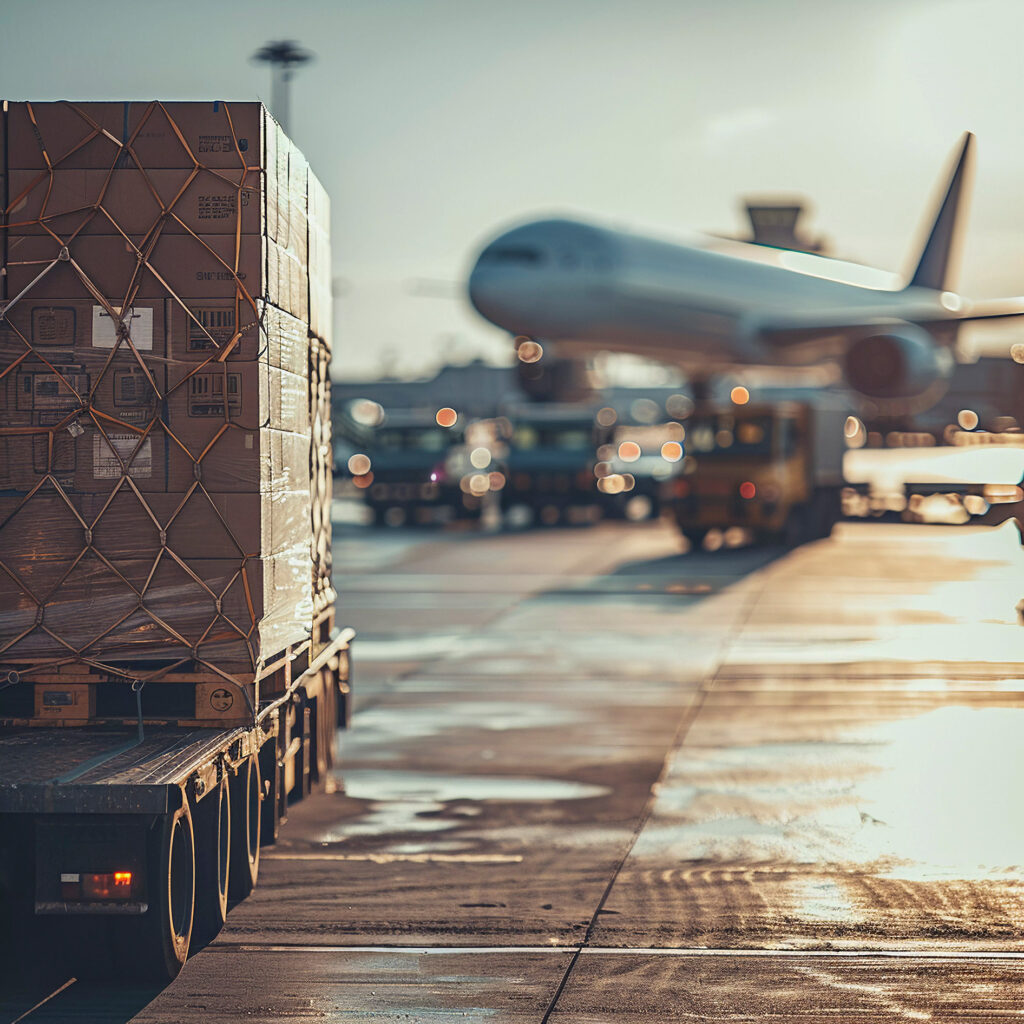Air freight is the fastest and most time-sensitive method for shipping goods internationally. It is the preferred choice for urgent, high-value, perishable, or time-critical cargo.

SERVICE DETAIL
High-Value Goods: Electronics, luxury items, and pharmaceuticals.
Time-Sensitive Shipments: Fashion/seasonal goods, spare parts, and emergency medical supplies.
Perishable Items: Fresh produce (where permitted) and flowers.
Smaller Shipments: Where the cost of sea freight minimums outweighs the air freight rate, typically for shipments under 100-200 kg.
| Feature | Air Freight Benefit |
| Speed & Transit Time | Unmatched speed. Typically 3 to 7 days from departure airport in China to arrival airport in Africa. Crucial for reducing lead times and optimizing inventory. |
| Reliability & Scheduling | High adherence to strict flight schedules with multiple daily/weekly departures, minimizing delays compared to sea freight. |
| Security | Strict regulations and high levels of security control at airports and throughout the transit process reduce the risk of damage or theft. |
| Global Reach | Access to virtually all international destinations, including landlocked regions via major hub airports (e.g., Addis Ababa, Nairobi, Johannesburg). |
| Lower Inventory Costs | Faster delivery allows businesses to hold less stock, reducing warehousing and inventory management expenses. |
We offer flexible solutions to match your urgency and budget:
| Service Type | Description | Estimated Transit Time (Airport to Airport) | Best Suited For |
| Express Air Freight | Fastest possible route, often utilizing direct, premium carrier flights. | 1 – 3 Days | Urgent shipments, samples, high-value electronics. |
| Standard Air Freight | A balanced option, utilizing reliable airlines and optimal routes. | 3 – 5 Days | Routine, time-critical cargo; most common choice. |
| Economical/Consolidated | Most cost-effective air option, where your cargo is grouped with others to fill a plane’s capacity. | 5 – 8 Days | Less urgent cargo where cost savings are a priority. |
| Air Charter | Dedicated use of an entire aircraft for extremely large or highly urgent volumes. | As negotiated | Project cargo, massive urgent orders. |
The cargo is loaded onto the aircraft (either a dedicated freighter or the belly-hold of a passenger plane).
An Air Waybill (AWB) is issued, which acts as the contract of carriage and provides the tracking number.
The cargo arrives at the destination airport (e.g., Lagos, Nairobi, Johannesburg).
The consignee (importer) or their appointed customs broker must clear the goods through local customs.
Air freight rates are calculated based on the Chargeable Weight, which is the greater of the following two metrics:
Actual Weight (Gross Weight): The physical weight of the cargo in kilograms (kg).
Volumetric Weight (Dimensional Weight): A calculated weight based on the cargo’s size/volume, assuming a standard density for air cargo.
Formula: Volumetric Weight (kg)=6000Length (cm)×Width (cm)×Height (cm)Rate Structure: Air freight typically has tiered pricing based on weight breaks (e.g., 45kg+, 100kg+, 300kg+, 500kg+, 1000kg+). The unit price per kilogram generally decreases as the volume of the shipment increases.
Air transport is subject to strict international regulations (IATA) to ensure flight safety. Dangerous Goods (DG), even in small quantities, require special certification, handling, and packaging.
Lithium Batteries: Found in most electronics, power banks, etc. (Requires Material Safety Data Sheet (MSDS) and specific UN packaging.)
Magnetized Materials: Motors, speakers, audio equipment. (Requires a magnet test report.)
Liquids, Powders, and Gels: Cosmetics, chemicals, oils.
Flammable or Explosive Items: Aerosols, fuels, paints.
Always declare the exact nature of your cargo to your freight forwarder to ensure compliance and avoid severe delays or penalties.

SERVICE
